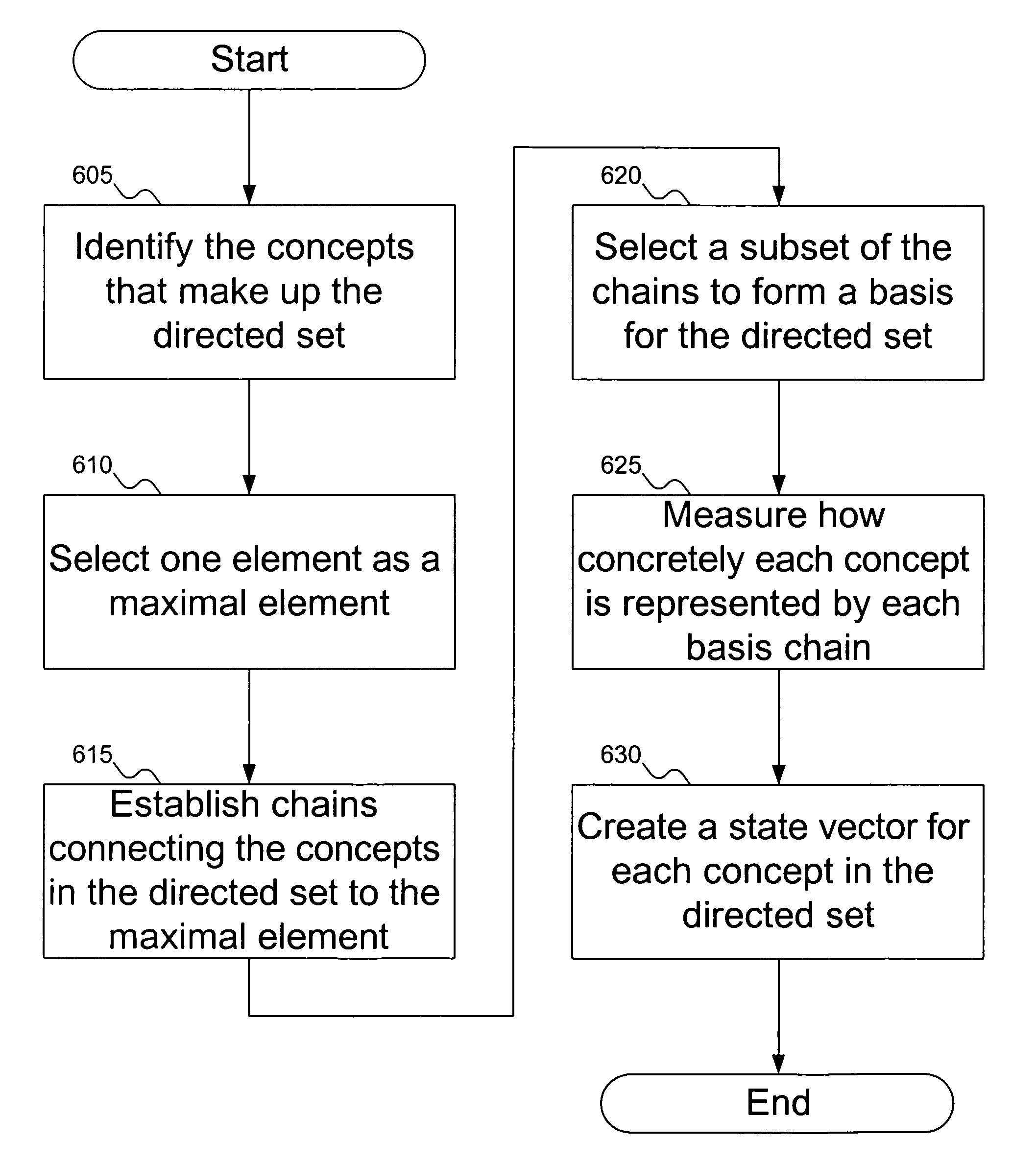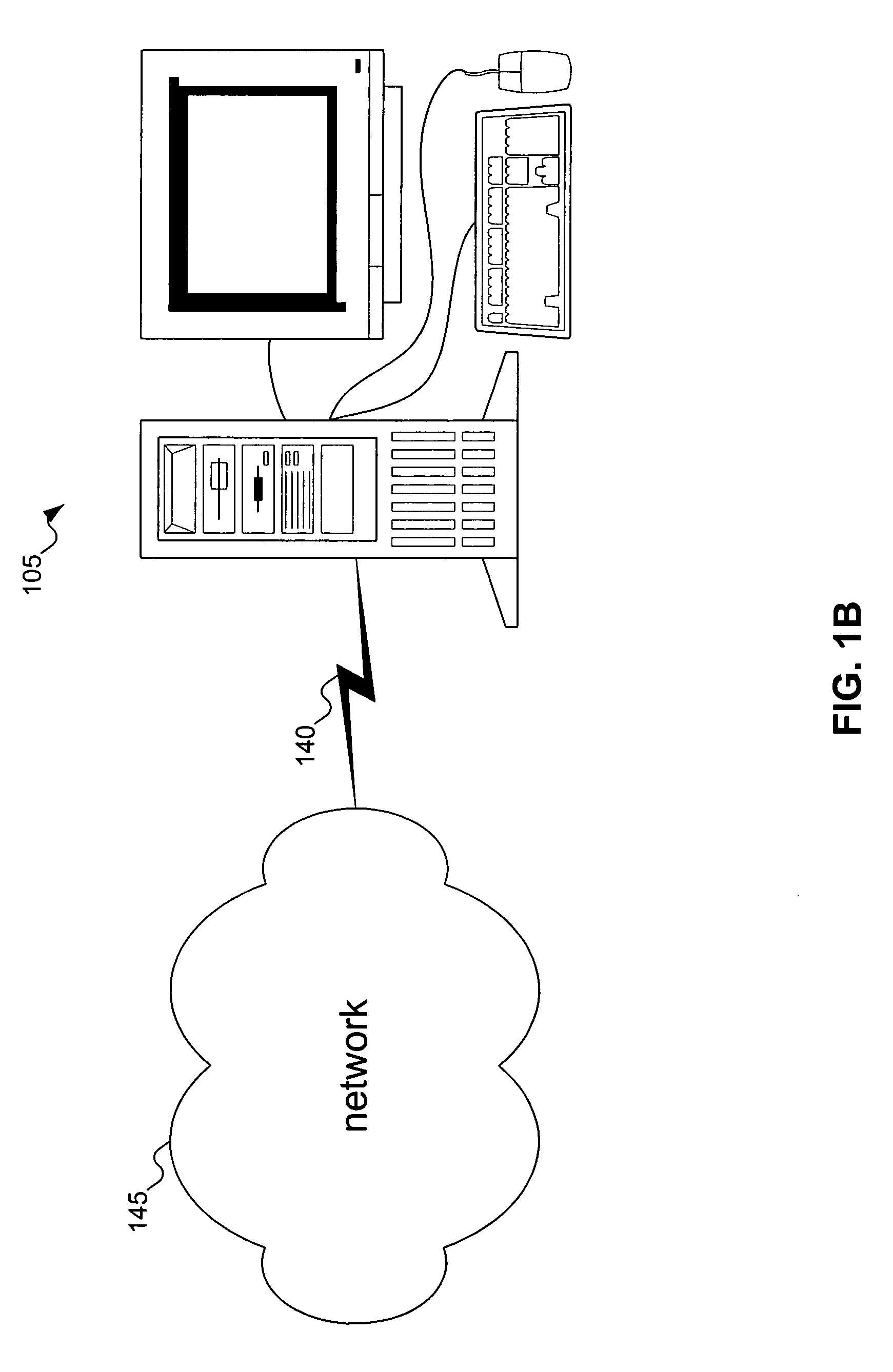Construction, manipulation, and comparison of a multi-dimensional semantic space
a multi-dimensional semantic space and construction technology, applied in the field of determining the semantic content of a network, can solve the problem that the internet is the kind of undertaking that consumes vast amounts of resources
- Summary
- Abstract
- Description
- Claims
- Application Information
AI Technical Summary
Benefits of technology
Problems solved by technology
Method used
Image
Examples
example results
[0107
[0108]The following example results show state vectors φ(s) using chain 505 as function g1, chain 510 as function g2, and so on through chain 540 as function g8.
[0109]
φ(“boy”) φ(“dust”) φ(“iguana”) φ(“woman”) φ(“man”)
[0110]Using these state vectors, the distances between concepts and the angles subtended between the state vectors are as follows:
[0111]
Pairs of ConceptsDistance (Euclidean)Angle Subtended“boy” and “dust”~1.85~52°“boy” and “iguana”~1.65~46°“boy” and “woman”~0.41~10°“dust” and “iguana”~0.80~30°“dust” and “woman”~1.68~48°“iguana” and “woman”~1.40~39°“man” and “woman”~0.39~07°
From these results, the following comparisons can be seen:
[0112]“boy” is closer to “iguana” than to “dust.”
[0113]“boy” is closer to “iguana” than “woman” is to “dust.”
[0114]“boy” is much closer to “woman” than to “iguana” or “dust.”
[0115]“dust” is further from “iguana” than “boy” to “woman” or “man” to “woman.”
[0116]“woman” is closer to “iguana” than to “dust.”
[0117]“woman” is closer to “iguana”...
PUM
 Login to View More
Login to View More Abstract
Description
Claims
Application Information
 Login to View More
Login to View More - R&D
- Intellectual Property
- Life Sciences
- Materials
- Tech Scout
- Unparalleled Data Quality
- Higher Quality Content
- 60% Fewer Hallucinations
Browse by: Latest US Patents, China's latest patents, Technical Efficacy Thesaurus, Application Domain, Technology Topic, Popular Technical Reports.
© 2025 PatSnap. All rights reserved.Legal|Privacy policy|Modern Slavery Act Transparency Statement|Sitemap|About US| Contact US: help@patsnap.com



